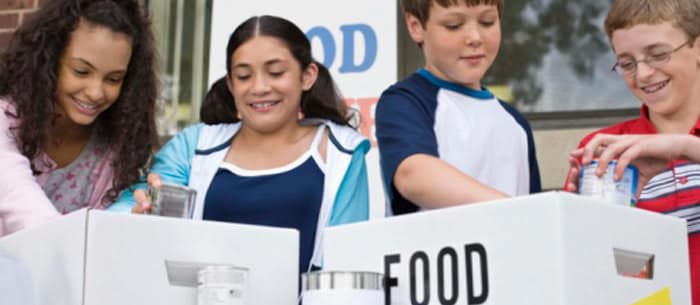When the 2010 Haiti earthquake hit, New Brighton, Minn., mum Sarah Aadland felt helpless. But her 4-year-old daughter wanted to know how she could help. “There are so many big problems and we feel there is not much we can do to help,” says Aadland, “but when you are 4, every problem is little and you can help.”
Her daughter’s question made Aadland realize that kids are never too young to volunteer. The key is helping your child (or the child you nanny for) discover his or her passion, and then finding volunteer opportunities where those talents can help others feel good.
We asked Jenny Friedman, author of “Doing Good Together: 101 Easy, Meaningful Service Projects for Families, Schools and Communities” and executive director of the family volunteering nonprofit Doing Good Together, and William Damon author of “The Path to Purpose: How Young People Find Their Calling in Life,” for advice on helping your child turn a passion into a lifetime commitment to helping others.
“When kids follow through and stick with things, it is their own things they are following through on,” says Damon. Whether they are infants who accompany parents as they deliver meals or teenagers who raise money to fight cancer, there is a way to introduce them to volunteering.
“Whatever the age of your children is now is the right age to start volunteering,” says Friedman.
-
Be a Volunteering Family
“You want this to be a habit and something they associate with warm family time,” Friedman says of volunteering. Toddlers may not understand how they are helping, but by preschool age, they will. And while the Aadland children volunteer, Sarah has conversations with them about how their work helps people.
-
Point Out Talents
Encourage your child to share a particular skill through volunteering, and help them identify their interests. Do they take pride in watching their well-tended plants grow? Point that out to them.“Find things that are both useful and meaningful at the same time,” says Damon. These things show kids they can be responsible and make a difference.
-
Figure Out What Gets Them Excited
“Ask your child, ‘What is your spark?’ and almost every kid seems to know what that means,” says Friedman. Kids are empowered when volunteering activities are based on their interests. Tweens can use soccer skills to help kids with special needs learn how to play. Older teens can run computer classes at a senior center or create a website for a local nonprofit.For kids younger than five who may not be able to answer the spark question yet, have them choose one activity (from a list of three) they would most enjoy doing. “Giving your child voice to share what they want to do is critical,” says Friedman.
Need volunteering ideas? Try VolunteerMatch, which matches people (including kids and teens!) with needs in your area — you can even search based on causes you want to help, like education, sports or animals.
-
Start Small
Building a love for volunteering doesn’t usually start with spending hours at a local soup kitchen or animal shelter (although no one would discourage that!). Take baby steps and don’t worry if you can only volunteer every now and then.Don’t ask your 8-year-old to play his clarinet at a large fundraiser. Instead, see if he wants to play for his grandparent in a nursing home. “He sees the direct result of entertaining someone,” suggests Damon. “That is very meaningful to a child. Even if it seems small to a parent, it is not so small to a child.”
-
Be Creative
Is your 5-year-old a ballerina? Maybe she could put on a tutu and dance for an elderly neighbour. Are your kids Picassos with crayons? Send their pictures to nursing homes, individuals and Meals on Wheels recipients. Have a budding scientist? Maybe he can compost kitchen scraps and donate them to a community garden. Your organized child can spearhead a playground cleanup at school, while your high-energy kid can pound the pavement for a charity walk.
-
Emphasize Everyday Kindness
Show your children the cyclical nature of giving and receiving, suggests Friedman. Ask your kids how they helped someone today and how someone helped them. Did they hold the door for their music class? Did a teacher help them pick up a dropped stack of paper?Volunteering reinforces that give-and-take mentality and builds compassion. When they are faced with situations where people need help, they’ll respond, says Friedman.
When the Aadland children are adults, their mum hopes volunteering and helping others will be natural inclinations. “I’d like for them to see problems in their community and, as a matter of course, take some kind of action,” says Aadland.
Text source: Julia Quinn-Szcesuil is an award-winning freelance writer and a mum to two girls. She lives in Massachusetts and has written for local and national publications.
